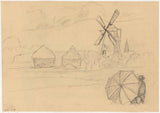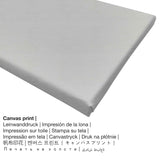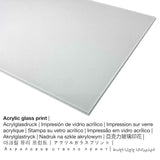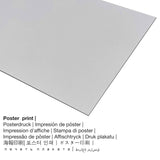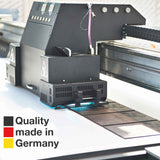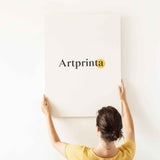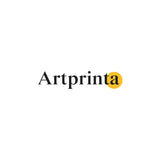Jozef Israëls, 1834 - Okirikiri ala nwere igwe igwe na onye n'azụ nche anwụ - ọmarịcha nka.
Ụtụ gụnyere. Mbupu gbakọrọ na ndenye ọpụpụ.
Nye iwu ihe ị chọrọ
Na nhọrọ mwepu ngwaahịa ị nwere ike ịhọrọ ihe na nha nke nhọrọ gị. Anyị na-ahapụ gị ka ịhọrọ nha na akụrụngwa ọkacha mmasị gị n'etiti nhọrọ nhazi ngwaahịa ndị a:
- Kwaaji: The canvas direct print is a printed canvas stretched on a wood stretcher. A canvas print has the advantage of being relatively low in weight. This means, it is easy to hang up the Canvas print without additional wall-mounts. That is why, a canvas print is suitable for any type of wall.
- Mbipụta akwụkwọ mmado (ihe kwaaji): The poster is a UV printed canvas paper with a fine surface structure. It is suited for framing the art copy using a customized frame. Please keep in mind, that depending on the absolute size of the poster we add a white margin of around 2-6cm around the print, which facilitates the framing with your custom frame.
- Bipụta na iko acrylic na-egbuke egbuke (nke nwere ezigbo mkpuchi iko n'elu): An acrylic glass print, often denoted as a print on plexiglass, will convert an original into marvellous home decoration and forms a good alternative to canvas or aluminium dibond prints. Your work of art will be manufactured with the help of state-of-the-art UV printing technology. It makes impressive and rich color shades. The great benefit of a plexiglass fine art copy is that contrasts and also small artwork details will be recognizeable with the help of the very fine gradation in the print.
- Mbipụta nke aluminom: This is a metal print made on aluminium dibond material with an impressive effect of depth, creating a modern impression by having a non-reflective surface structure. The Aluminium Dibond Print is the ideal introduction to fine art reproductions on aluminum. For the Print On Aluminum Dibond, we print the favorite artpiece onto the surface of the aluminum. The colors of the print are luminous in the highest definition, the fine details appear crisp, and there’s a matte appearance you can literally feel.
Nkwupụta iwu: We do our utmost in order to describe our products as clearly as possible and to demonstrate them visually on the various product detail pages. However, the pigments of the printed materials and the imprint may differ somehwat from the presentation on your device's monitor. Depending on your settings of your screen and the nature of the surface, not all color pigments will be printed 100% realistically. Considering that all our art prints are processed and printed manually, there may as well be minor deviations in the exact position and the size of the motif.
Kedu ụdị ngwaahịa anyị na-enye?
Landscape with mill and person behind umbrella bụ nke nwoke Dutch artist Jozef Israëls in 1834. Nowadays, the piece of art belongs to the Rijksmuseum's mkpokọta nka, nke bụ ihe ngosi nka kacha ukwuu maka nka na akụkọ Dutch site na Middle Ages ruo ugbu a. Site n'ikike nke: Rijksmuseum (nwere ikike: ngalaba ọha).Ebe E Si Nweta nke ihe osise:. Na mgbakwunye na nke a, nhazi ahụ dị na odida obodo format na a akụkụ ruru nke 1.4: 1, nke pụtara na ogologo bụ 40% ogologo karịa obosara. Jozef Israëls was a male painter of Dutch nationality, whose artistic style can mainly be classified as Historicism. The Dutch artist was born in the year 1824 in Groningen,Netherlands and died at the age of 87 in 1911 in Scheveningen, Netherlands.
Ozi ndabere na nka pụrụ iche
| Aha nka: | "Landscape with mill and person behind umbrella" |
| nhazi ọkwa: | sere |
| Okwu mkpokọta: | nkà nke oge a |
| Century: | 19th narị afọ |
| Afọ okike: | 1834 |
| Afọ nka: | ihe dị ka afọ 180 |
| Egosiputara na: | Rijksmuseum |
| Ebe ngosi nka: | Amsterdam, Netherlands |
| Weebụsaịtị nke ihe ngosi nka: | Rijksmuseum |
| Ụdị ikike nka: | ngalaba ọha |
| Site n'aka: | Rijksmuseum |
Ngwaahịa a
| Nkewa edemede: | ọrụ mgbidi |
| Usoro mmeghari: | dijitalụ mmeputakwa |
| Usoro mmepụta: | Mbipụta UV ozugbo |
| Mmalite ngwaahịa: | German mere |
| Ụdị ngwaahịa: | na mmepụta ihe |
| A na-atụ aro iji ngwaahịa eme ihe: | foto mgbidi, ụlọ ihe osise nka |
| Ndepụta: | nhazi odida obodo |
| Oke akụkụ: | ogologo ruo obosara 1.4: 1 |
| Mmetụta akụkụ: | ogologo bụ 40% ogologo karịa obosara |
| Materials: | Mbipụta kwaaji, mbipụta ọla (aluminium dibond), mbipụta enyo acrylic (nwere ezigbo mkpuchi iko), mbipụta akwụkwọ mmado (akwụkwọ kwaaji) |
| Mbipụta kanvas (akwa akwa na etiti ihe ndọtị) dị iche iche: | 70x50cm - 28x20", 140x100cm - 55x39" |
| Mbipụta iko acrylic (nwere ezigbo mkpuchi iko) dị iche iche: | 70x50cm - 28x20", 140x100cm - 55x39" |
| Nhọrọ nke mbipụta akwụkwọ mmado (akwụkwọ kwaaji): | 70x50cm - 28x20" |
| Nhọrọ ebipụta aluminom: | 70x50cm - 28x20", 140x100cm - 55x39" |
| Igwe onyonyo: | na-enweghị etiti |
Ozi omenka
| Aha onye nka: | Jozef Israel |
| Gender: | nwoke |
| Obodo onye nka: | Dutch |
| Ọrụ nke onye na-ese ihe: | onye na-ese ihe |
| Mba onye si: | mba netherland |
| nhazi ọkwa: | omenkà nke oge a |
| styles: | Akụkọ ihe mere eme |
| Nwụrụ na afọ nke: | 87 afọ |
| Afọ ọmụmụ: | 1824 |
| Obodo ọmụmụ: | Groningen, Netherlands |
| Nwụrụ n'afọ: | 1911 |
| Nwụrụ na (ebe): | Scheveningen, Netherlands |
Enwere ikike nwebiisinka © | www.artprinta.com (Artprinta)

